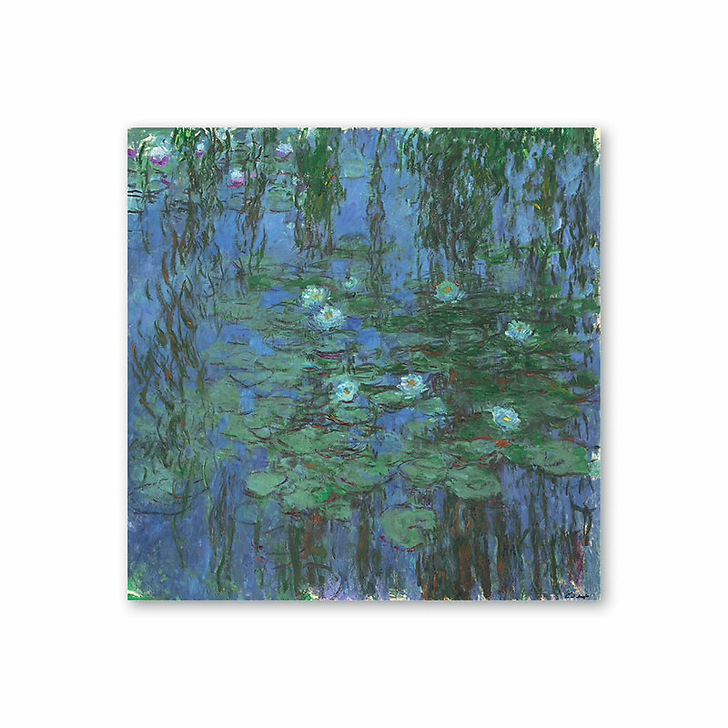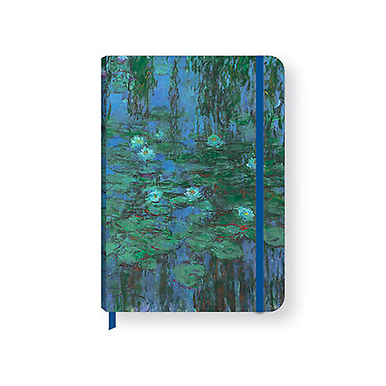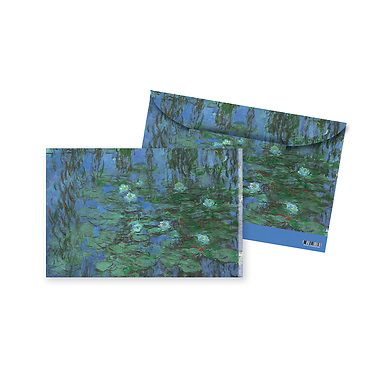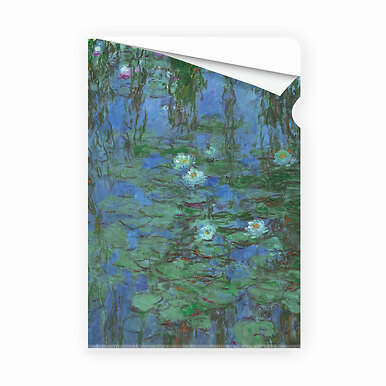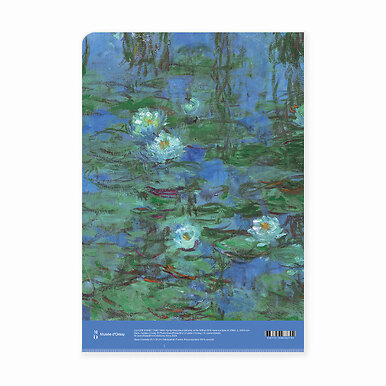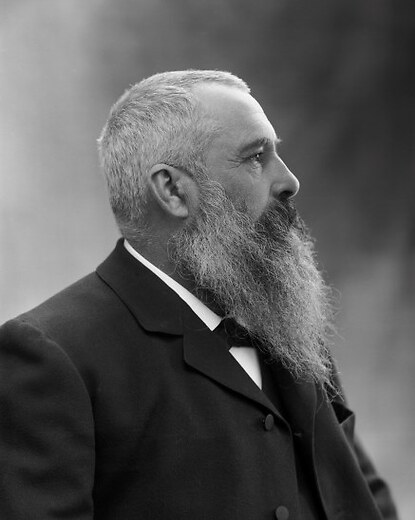Poster Claude Monet - Water lilies Blue - 60x60cm
IA700078
Claude Monet (1840 - 1926)
Water lilies Blue, between 1916 and 1919
Oil on canvas
H. 204,0 ; L. 200,0 cm.
Purchase, 1981
© Musée d'Orsay, Dist. RMN-Grand Palais / Patrice Schmidt
"Nymphaea" is the botanical name for a water lily. Monet grew white water lilies in the water garden he had installed in...
Read more
Claude Monet (1840 - 1926)
Water lilies Blue, between 1916 and 1919
Oil on canvas
H. 204,0 ; L. 200,0 cm.
Purchase, 1981
© Musée d'Orsay, Dist. RMN-Grand Palais / Patrice Schmidt
"Nymphaea" is the botanical name for a water lily. Monet grew white water lilies in the water garden he had installed in his property at Giverny in 1893. From the 1910s until he died in 1926, the garden and its pond in particular, became the artist's sole source of inspiration. He said: "I have come back to things that are impossible to do: water with weeds waving in the depths. Apart from painting and gardening, I am good for nothing. My greatest masterpiece is my garden."
Eliminating the horizon and the sky, Monet focused on a small area of the pond, seen as a piece of nature, almost a close-up. No details stand out and the overall impression is one of a shapeless surface. The square format reinforces the neutrality of the composition. The lack of a frame of reference gives the fragment an infinite, limitless feeling.
Close
Login to see prices
Sold by GrandPalaisRmn

